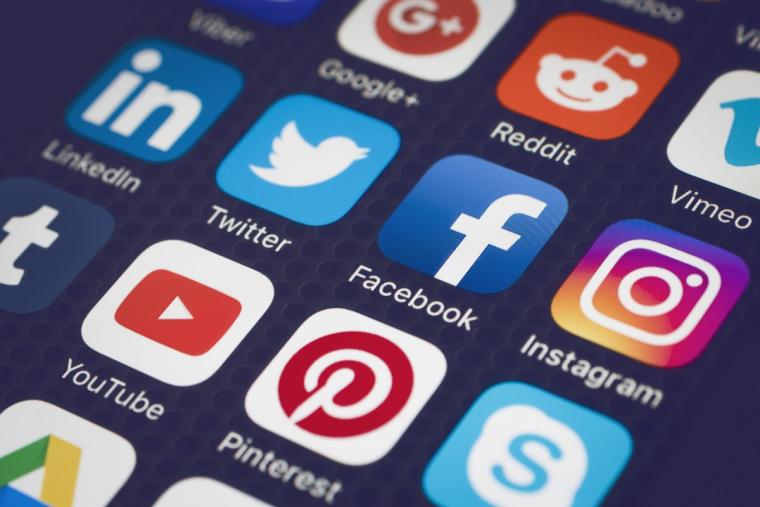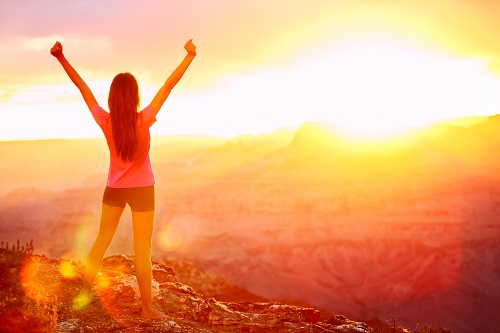
An often-mirrored meme notes, “Send any amount of time on social media and you’ll see why it’s necessary to write DO NOT EAT on silica packets.”
Expand that to sports and you have the case of the influencer who hit a golf ball and a broken club, into the Grand Canyon, then published the whole incident to TikTok.
It didn’t take long for justice to catch up. Grand Canyon National Park mirrored a photo of the incident and the influencer, posting on its own social account with the message, "Members of the public helped identify the individual’s social media account.”
The perpetrator, Katie Sigmond, with nearly 7 million followers on TikTok and another 2.9 million on Instagram, got hoisted on her own petard.
Golf Digest notes, “Insider.com first reported the story and spoke to Joelle Baird, a public affairs specialist for the Grand Canyon National Parks Service. According to Baird, Sigmond is facing three Class B misdemeanor charges that are "unlikely" to lead to any jail time but could be worth up to $1,000 in fines per offense.”
However, Sports Illustrated notes, “According to the Department of Justice’s Criminal Resource Manual, violations of national park regulations may result in penalties ranging from a $100 fine to three months of imprisonment. The clip has since been removed from Sigmond’s social media accounts, but Reddit users preserved a screen recording of the original post.”
In other words, social media is forever and stupid mistakes aren’t easily erased.
Grand Canyon Law Enforcement (GCLE) shared the post, and garnered plenty of comments, most of it heavily negative toward the woman. (Many believed she should be ordered to go back into the Grand Canyon and hunt until she was able to retrieve her ball and club).
While the incident might have been conceived as a lighthearted prank, the influencer was apparently indifferent to (or perhaps ignorant of) the fact that not only was littering illegal, throwing objects into an area where individuals were hiking, sometimes with children, or where they were riding horses, could have dangerous, and even life-threatening results. Many chimed into the GCLE post, recounting times they had nearly been hit by stones, bottles, cans and other items while outdoors.
It's not the first time for such an incident, points out Golf Digest: “According to CBSNews.com, comedian Jake Adams faced charges for hitting a golf ball in Yellowstone Park last year, but has since apologized.”
The Grand Canyon has had its share of problems, including incidents in which users fell to their deaths trying to take clifftop selfies. The fact that, in many cases, visitors will climb on top of fragile rock formations or trample on endangered plant species in their quests for the perfect shot gets rangers upset as well.
Social media, while it has opened the eyes of many to the beauty of national parks, has been not just detrimental to their landscape but to the visitors themselves. Individuals have been gored by bison while trying to post photos to their accounts, mauled while trying to take bear selfies (exactly what it sounds like) and bitten in the pursuit of rattlesnake selfies.
Ski resorts have also seen their share of casualties, much of it due to social media. An article in the Denver Post noted that during the 2015-2016 ski season, 30 people died in avalanches in the U.S., up from 11 in the 2014-2015 season, according to data from Avalanche.org. Anecdotal evidence suggests that more skiers are trekking further out to find pristine mountainsides, without necessarily learning about avalanche safety measures, in part out of a desire to impress friends with videos or selfies posted online. In fact, among the 270 Colorado deaths since 1950, the vast majority were men with a mean age of 29 — an age at which social media use is peaking.
“Social media is definitely playing a role in their decision-making,” said Emery Rheam, a 16-year-old from Jackson, Wyoming, who has surveyed teenage skiers about their perspectives on avalanche safety. “But the terrain they are in, that they can reach and ski, it outmatches their education.”
Another problem: social media users rarely come prepared for the risks posed by outdoor venues. Venturing onto a mountain trail, for example, without equipment, correct footwear, flashlights, food or even water. The Los Angeles Times covered an incident in which a teenager hiked to the top of a waterfall while wearing tennis shoes, then slipped and fell 50 feet, sustaining numerous fractures.
Natural disasters also lure ersatz influencers outside. Authorities in Australia apprehended a man who stood in the middle of a forest fire, trying to post to Instagram.
Unfortunately, the list doesn’t stop there. We recommend reading Insider Magazine’s absolutely mind-boggling photo essay, “The 16 Dumbest Things People Have Done in U.S. National Parks."
 Outside Magazine has even more proof of park user stupidity. The Los Angeles County Sheriff’s Department Search and Rescue team reports that its missions have increased by 38 percent over the last five years — something they attribute to one-upmanship in the form of people sharing photos and videos of their dangerous activities online.
Outside Magazine has even more proof of park user stupidity. The Los Angeles County Sheriff’s Department Search and Rescue team reports that its missions have increased by 38 percent over the last five years — something they attribute to one-upmanship in the form of people sharing photos and videos of their dangerous activities online.
The department’s compiled statistics might be laughable – if they weren’t so dire. There were 681 SAR missions in 2017, the highest number ever, up from 491 in 2013. L.A. County is home to numerous outdoor hotspots, from beaches to 50-foot waterfalls to slot canyons to 10,000-foot mountains. And social media has brought in a much wider audience – an audience that simply can’t resist mimicking (and then posting proof they’ve tried) the dangerous stunts they’ve seen others perform.
Before you hang all the blame on the younger generation, remember that there are some pretty darn eco-friendly people out there. In an editorial for the Marquette University student newspaper, Laura Niezgoda wrote, “Climate change is not the only threat affecting the outdoors. Humans are damaging the outdoors, harming wildlife and endangering people after being inspired by Instagram posts.”

